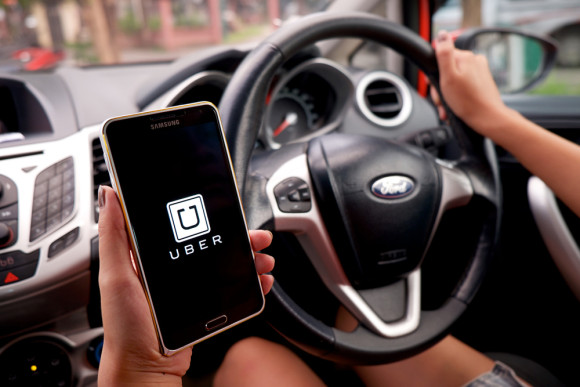Ridesharing drivers are safer drivers than the average American behind the wheel, according to research by Boston-based Aite Group.
The researchers, using driving analytics data, conclude that average consumers are safer catching an Uber or a Lyft or entrusting their kids to a HopSkipDrive than they are getting behind the wheel themselves.
According to Aite Group, publicly available data on how ridesharing drivers truly fare versus average American drivers is limited. Even the U.S. insurance industry, which has begun insuring ridesharing drivers, lacks insights into ridesharing drivers’ risk profile, the firm says.
Much of the media coverage of ridesharing safety has been about Uber’s criminal checks on its drivers, not about their driving records. Uber has resisted employing fingerprinting background checks that are common among taxicab firms. In February, Uber offered to pay $28.5 million to settle claims that a $1 “safe rides fee” was misleading because its background checks aren’t as thorough as the company advertised. In March, 2015, Uber said it was forming teams to address safety issues across the world, amid increasing concerns about the security of its passengers and drivers.
Ridesharing firms say they do check the motor vehicle driving records of their drivers. Uber says its drivers must meet certain driving record criteria including a minimum of one year of licensed driving, no more than three incidents in the past three years, no drunk or reckless driving citations, and no speeding violations for going 20 mph or greater over the speed limit. Uber also conducts a criminal background check.
Speeding Record
Aite Group’s report, “Driving Analytics: Ridesharing Drivers Are Safer Than Average American Drivers,” looked at driving records and, in terms of speeding, found that 30 percent of trips taken by ridesharing drivers involve speeding, compared to 41 percent for average drivers. Even when it comes to cell phone usage, which ridesharing drivers depend on for their work, they tend to be safer phone users while driving than average drivers. Ridesharing drivers are recorded fumbling with their phone for 23 seconds during a typical 15-minute trip, compared to 35 seconds for average drivers, according to the report.
“Insurers with a negative bias toward ridesharing may actually reconsider and favor policyholders that engage in ridesharing to the extent that participating in such activity may contribute to making them better drivers,” says Aite Group partner and insurance research director Gwenn Bezard. “For instance, insurers could incent young drivers to engage in ridesharing as a way to accelerate their growing up into savvy drivers.”
In a March interview with Insurance Journal’s Young Ha, Aite’s Bezard said that while insurers have been quite successful in developing insurance templates and getting state laws passed, they may need to improve their understanding of the risks they are covering in ridesharing and auto insurance. Overall Bezard said, insurers don’t have a lot of data to back up their endorsements.
Telematics data could be part of the solution, he said.
Bezard identified some of the areas where insurers may lack data. For one, many ridesharing drivers are doing package deliveries in addition to passenger rides but insurers may be overlooking this exposure. Also many ridesharing drivers are working for more than one ridesharing platform. Also, a small percentage of ridesharing drivers are using a friend’s or relative’s car and not their own.
Aite Group report uses data collected by driving analytics provider Zendrive to analyze ridesharing drivers’ behaviors and provides recommendations for how insurers should address this opportunity. Zendrive uses sensors on smartphones to detect driving behavior including distracted driving, aggressive driving and collisions.
A November, 2015 report by Aite said that ridesharing companies, including Uber and Lyft, have grown rapidly and still have room to grow, projecting that their revenue should expand almost fourfold between 2015 and 2020.
As of January 2016, more than 400,000 drivers in the United States partake in ridesharing, according to Aite. According to a study by JP Morgan Chase Institute, participants in the overall on-demand or gig economy that includes ridesharing, homesharing and task freelancing, are typically young, with the 25 to 34 age group accounting for the largest part of the gig workforce, and more likely to be male, live in the West and have an average median income of about $2,800 per month.
Topics Carriers Personal Auto
Was this article valuable?
Here are more articles you may enjoy.



 Trigger Warning: Cyber Policy Wordings to Impact Coverage for Tech Outage
Trigger Warning: Cyber Policy Wordings to Impact Coverage for Tech Outage  With American Mobile Cancellations, Florida Mobile Home Market Has ‘Fallen Apart’
With American Mobile Cancellations, Florida Mobile Home Market Has ‘Fallen Apart’  Global Tech Outage Disrupts Industries, Highlights Online Risks
Global Tech Outage Disrupts Industries, Highlights Online Risks  Travelers Reverses Q2 Income Loss, Narrows Underwriting Loss
Travelers Reverses Q2 Income Loss, Narrows Underwriting Loss 

